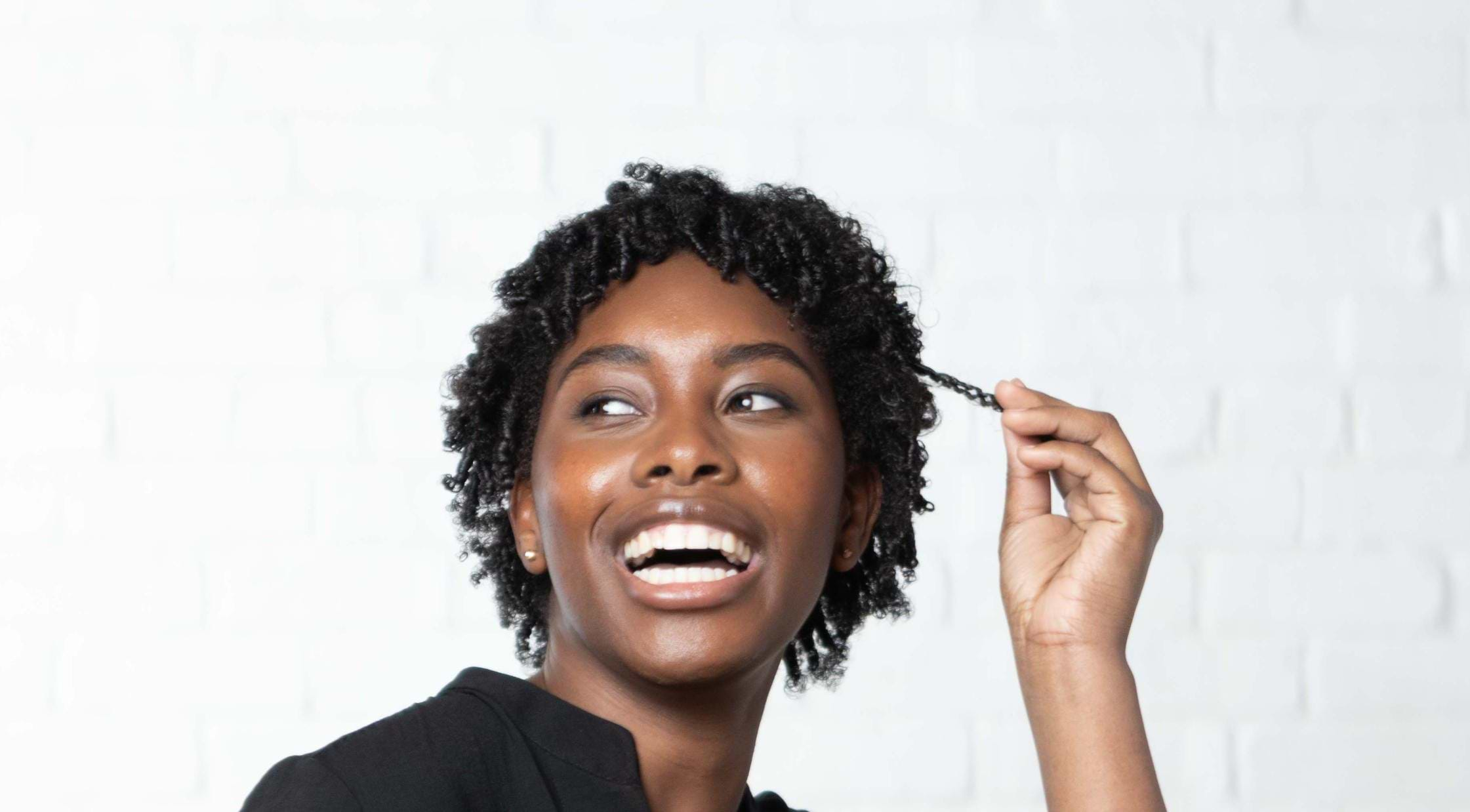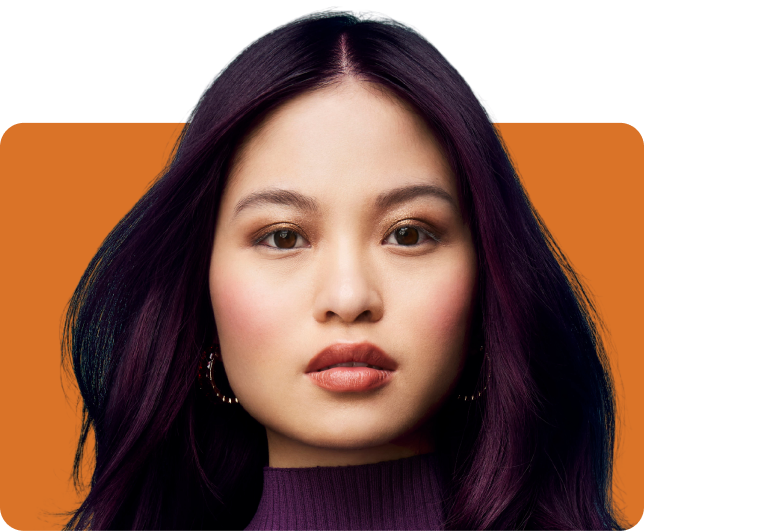Madison Reed | June 30, 2021
All You Need To Know About Coily Hair

Image by Madison Reed
Fun, free and filled with volume, coily hair can add style and definition for women who love to try out new things–or to go au naturale. And you can ditch the hair spray, because the natural shape will give a ton of volume, without a ton of effort. Want to learn more about this crowd favorite? Here’s an all-you-can-read guide to coily hair.
What We Love about Coily Hair
It’s voluminous. With coily hair, volume is rarely an issue. Most coily hair types stand on their own, and can be styled to perfection–with the right hair products. Coily hair rarely ever needs hairspray at the roots, because the s-shaped and z-shaped patterns do all the work.
It’s stylish. There are so many beautiful styles that can be created with coily hair. Whether it’s mini braids, big braids, bantu knots, twists, dreads, au naturale, or an afro, there are infinite ways to style coily hair (and it looks amazing with all of them). And, of course, playing it straight can be fun, too, from time to time. It doesn’t mean you don’t love your curls and coils!
It keeps things cool. Coily hair is built to naturally block the sun’s rays from the scalp. This way, the scalp doesn’t overheat during the summer. It also protects the scalp from harmful rays and elements like a natural barrier.
What’s the Difference Between Curly Hair and Coily Hair?
Coily hair has more defined ringlets, increased volume, and often, fuller body than curly hair. However, many hair care products work well on both types, since they fall near each other on the spectrum. (Curly hair starts at Type 3; the tighter the curls, the higher the number goes. See below for more.)
How to Maintain Coily Hair
It’s all about the products. Coily hair is typically more fragile than curly hair, wavy hair, and straight hair, because it has fewer cuticle layers. So, straightening it is not usually the best way to go. But the right hair care products will do wonders. When deep-conditioned, hydrated, and gently treated to perfection, coily hair looks its best.
Style it up. Coily hair may be prone to shrinkage, but there are several styles which can lengthen the look of the hair. Small braids, dreads, and even a smoothing treatment can combat shrinkage and give the hair length.
Just know the routine. At the end of the day, coily hair just needs to be hydrated and kept well. Keep shea butter, thick oils like almond, argan, and olive oil on hand for deep treatments, and sleep with a silk pillow, bonnet or scarf (this will keep the hair from getting tangled) to keep coily hair naturally gorgeous.
Coily hair also changes based on the variance of its s-shaped and/or z-shaped patterns.
What Causes Curls and Coils Anyway?
Everyone is born with a specific hair texture; however that texture may change over the span of one’s lifetime. The amount of curl, wave, or lack thereof, is dependent on the number of disulfide bonds between hair proteins (primarily keratin) found in the hair shaft. The greater the number of links, the curlier the hair. The fewer the number of links, the straighter the hair.
Coily Hair Types
A broad-spectrum hair typing system classifies the various hair textures that exist, categorizing each hair type into one of four (4) categories. In each category there are sub categories.
Straight hair is classified as a 1. Wavy hair is a 2. Type 3 hair is curly hair. And type 4 is, you guessed it, coily hair. Type 4 develops its structure from the shape of the cortex. The fibers of the hair are flat, and the flatter the hair shaft gets, the more disulfide bonds occur between hair proteins, making it squiggle in “s” and “z” shapes on the sides of the scalp. Coily hair has strong hooks at the end of the follicle (bulb), which keeps it from growing at an angle. In some cases, hormones and certain medications can change the texture of the hair, making it grow in a different way than originally formed.
Here are the subcategories of type 4 hair, and suggestions for how to wear each.
Type 4A Coily
This type has tightly coiled s-curls, and it can range from wiry to finely-textured. The strands are densely packed together, giving it an appearance of thickness.
How to wear it: au naturale. This hair has strong curl definition, so with simple upkeep, it’s easy to let the curls go wild. You can cut it short, keep it long, or style it in any shape you think will naturally flatter your face. These curls were made to be worn just how they came.
Type 4b Coily
This type of hair has a prominent z-shaped pattern and can range in thickness as well. It can feel very soft to the touch, but can also be very fragile. This type of hair has up to 75% shrinkage.
How to wear it: Short dreads. Keeping dreads short and stylish is a great way to get a fun look with little maintenance. The matted coils need to be maintained once or twice a week for clean edges. Other than that, dreads can be worn loosely or tied back, with a few strands hanging out for a soft and sophisticated look.
Type 4c Coily
This type of hair is similar to Type 4b, in that it has a z-shaped pattern. Since there are so many zig-zags in the hair, it appears to have one shape.
How to wear it: As big as it gets. This type of hair is meant to be embraced. Since it mostly stands on its own, it’s the perfect candidate for a full-blown afro. This classic hairstyle is a powerful symbol of confident self-expression.
When you have naturally coily hair, there is very little you need to do to give it the look you want. The right hair care will keep your coils looking strong and shiny.
Originally Published: 4/7/2015
Updated: 6/30/2021
Find Your Perfect Shade
Take our 2 minute quiz to get your colorist-approved hair color match!
Take the quizGet Free Shipping
Plus exclusive promotions, hair tips and info about events near me when you subscribe!
















